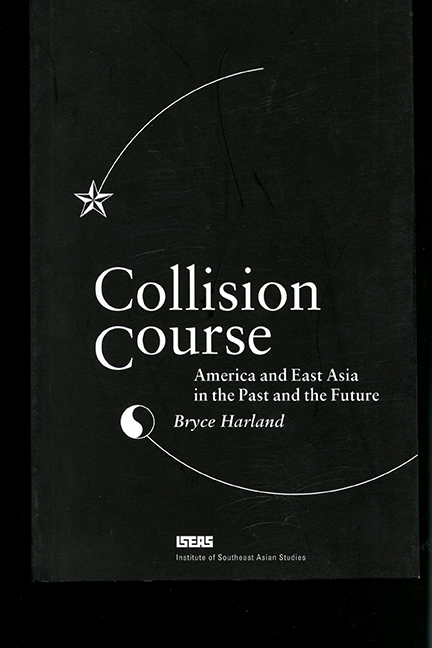Book contents
- Frontmatter
- Dedication
- Contents
- PREFACE
- INTRODUCTION
- CHAPTER 1 The West Strikes Asia
- CHAPTER 2 America Asserts Itself
- CHAPTER 3 Turmoil in China Leads to War in the Pacific
- CHAPTER 4 Cold War Sets In
- CHAPTER 5 War in Korea Deepens Confrontation
- CHAPTER 6 Vietnam – Failure, and Success
- CHAPTER 7 The Anti-Soviet Coalition
- CHAPTER 8 Japan Challenges America Again
- CHAPTER 9 Smaller Dragons Join In
- CHAPTER 10 China against a Wall
- CHAPTER 11 The Asian Diaspora
- CHAPTER 12 Regionalism in Asia
- CHAPTER 13 Whither America?
- Postscript: The Eye of the Viewer
- Bibliography
- Index
- The Author
CHAPTER 10 - China against a Wall
Published online by Cambridge University Press: 21 October 2015
- Frontmatter
- Dedication
- Contents
- PREFACE
- INTRODUCTION
- CHAPTER 1 The West Strikes Asia
- CHAPTER 2 America Asserts Itself
- CHAPTER 3 Turmoil in China Leads to War in the Pacific
- CHAPTER 4 Cold War Sets In
- CHAPTER 5 War in Korea Deepens Confrontation
- CHAPTER 6 Vietnam – Failure, and Success
- CHAPTER 7 The Anti-Soviet Coalition
- CHAPTER 8 Japan Challenges America Again
- CHAPTER 9 Smaller Dragons Join In
- CHAPTER 10 China against a Wall
- CHAPTER 11 The Asian Diaspora
- CHAPTER 12 Regionalism in Asia
- CHAPTER 13 Whither America?
- Postscript: The Eye of the Viewer
- Bibliography
- Index
- The Author
Summary
The collapse of the Soviet Union completed the latest of the periodic swings in American attitudes towards China. Freed from the Soviet threat, Americans felt less need of Asian allies. The United States could now afford to pursue its own interests, political and economic. Americans could go back to using China for domestic political purposes. And China could not do much about it, because economically it had become dependent upon America. The collapse of the Soviet Union worried Chinese leaders too. They saw that China would now have to bear the brunt of the American crusade for human rights and democracy. They knew that, to keep up a high rate of growth, China had to have access to the American market and American technology. But they also knew that the United States needed China's expanding market. This reinforced their national pride, and encouraged them to stand up to American pressure, on economic issues as well as on Taiwan.
The Tiananmen incident had aroused widespread public indignation in America, and reversed the growth of a more friendly attitude towards China. It also led to a demand for sanctions against China. This was voiced loudly by some of the Chinese who were in America studying: the cry was taken up by the media, and by American politicians, of both parties. President Bush felt obliged to respond. On 5 June 1989, he suspended military sales to, and military exchanges with China. After Teng had publicly endorsed the actions taken by the army in Tianamen Square, Bush announced a second set of sanctions, including the suspension of lending to China by international institutions, and of official exchanges at Cabinet level. The United States also encouraged its allies to follow suit: at the economic summit in Paris in July, even Japan agreed to suspend economic aid to China. At the same time, the President warned against an ‘emotional response’ to events in Peking, on the ground that disproportionate sanctions might lead to a total break in relations, and cause further hardship to the Chinese people. Having tried unsuccessfully to speak to Teng by telephone.
- Type
- Chapter
- Information
- Collision CourseAmerica and East Asia in the Past and the Future, pp. 154 - 166Publisher: ISEAS–Yusof Ishak InstitutePrint publication year: 1986

